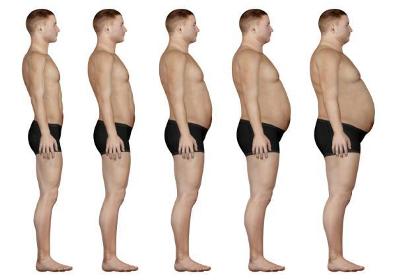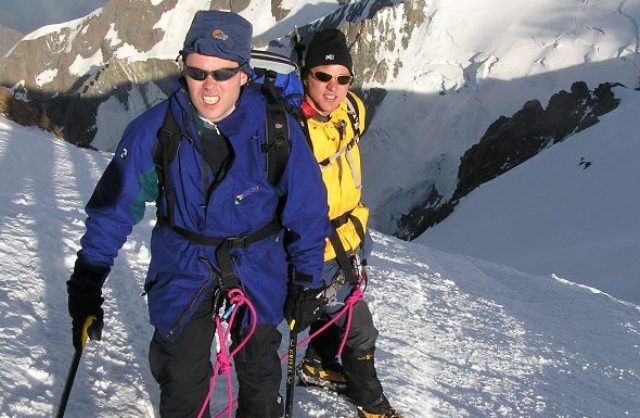FITNESS
(NEW: TAKE OUR ONLINE FITNESS TEST)
THIS IS THE MOST IMPORTANT PAGE ON THIS SITE, PLEASE READ IT CAREFULLY.
(Please also see this video for more information)
Please bear in mind the following:
- Mont Blanc (4808m) is harder than Aconcagua (6960m) and much harder than Kilimanjaro (5895m)
- The effort required on summit day exceeds that of running a marathon
- You absolutely MUST have solid endurance fitness to do this (mountaineering experience not required)
- If you are overweight you will almost certainly fail
- You could try our North Wales based MONT BLANC TRAINING WEEKEND to get the best idea of what’s required
So what then is “solid endurance fitness“? Well to be clear, it’s a big step up from long stiffish walks now and again or three 90 minute gym sessions a week. A good starting point would be to take our ONLINE FITNESS TEST to see where you currently are (there are a couple of tests in there like running 10km as fast as you can or trying to hike a certain amount of ascent in a day, so if you can try these you’re more likely to get an accurate result).
Next read through the three main contributory factors below to see how you can improve. Not everyone exercises in the same way so it’s hard to offer specific training advice, but in general you’ll need to get used to working at relatively high heart rates (puffing quite a bit and just about able to communicate, but not chat) for several hours at a time. You can run, bike or walk fast uphill, but you need to push it to the point where you feel quite uncomfortable and hold it there for over an hour at a time if you want to improve. As a previous client of ours put it, “You will either suffer during your training or suffer during the course“.
If you can get to North Wales, our MONT BLANC TRAINING WEEKENDS are run by guides who work regularly on Mont Blanc, and you’ll get a very useful “Heads Up” on what to expect. In any case, consider the following 3 factors, listed in order of importance:
YOUR WEIGHT

Probably the single biggest determinant in whether or not you are going to be able to climb Mont Blanc. Look at the chart on the left: of the 4500+ clients we have had to date, the vast majority that made the summit would have fitted one of the first three categories. Only about 20% of those from category 4 made it, and these were usually people with a solid background in endurance sports who had by their own definition “let themselves go a bit”. We have never summitted with anyone from category 5, and the rare clients like this we have had dropped out of the course in the early stages.
The best sort of body shape for climbing Mont Blanc would be that of a distance runner; most of us (including MBGs Head Guide) are not as lean as that, but the closer you can get to it the better. (You can always put it all back on again once you’ve done it.) We do not prejudge on appearances, and if you do reasonably well on the first three days on Gran Paradiso we will be happy to try Mont Blanc with you regardless of body shape. In our experience however getting yourself into or below category 3 on our chart is probably the single biggest thing you can do to improve your chances. (Note: ask someone else where they think you fall on this chart, you’re more likely to get an accurate result.)
YOUR SPORTING BACKGROUND
The second most important factor is whether or not you practice an endurance sport regularly. “Endurance sports” would include things like running and cycling, rather than once a week football or squash or “normal” hill walking. Apart from the obvious physical benefits, a background in any endurance sport where one could be said to suffer with the effort is hugely beneficial in dealing with the long effort/discomfort in climbing Mont Blanc. If you live anywhere near any big hills, put a light rucsac on and see if you can accumulate over 1500m of ascent in a day (you’ll probably have to go up several times depending on where you live); that’s also a good standard as it’s the sort of thing you’ll have to do on your week with us.
As a rough idea, Snowdon from Llanberis in North Wales is 1000m of ascent, and Ben Nevis by the tourist route is 1300m of ascent. Can you climb Snowdon twice in a day? Mont Blanc from Tete Rousse is about 1700m of ascent from 3100m to 4800m, with the altitude making it feel 30% harder. If you don’t have hills near you, go to a gym and get on a treadmill (set flat) and see how long it takes you to run 10km; around 50 minutes is a good benchmark.
If you don’t run, cycle or hill walk, START! Most people book several months before their course start date, and you can achieve a huge amount in that time. Some people do very little of course and still make the top, but they are generally very young and very slim; the rest of us have to work for it, and more than a little. The fitter you are the more you’ll enjoy it, so give it your best shot and don’t hesitate to contact us if you need some advice, we’re happy to help.

Grimacing or smiling – same ascent, different experience!
YOUR AGE
Our minimum age requirement to climb Mont Blanc is 18 years unaccompanied. We will take people as young as 16 years but they must be accompanied by an adult and must also be unusually hardy for their age with significant outdoor trekking experience, please call us to discuss if in any doubt. We have no maximum age limit, but clearly there comes a point where age starts to count against you:
IN SUMMARY… IF YOU ARE "HIGH RISK" IN ONE OF THE ABOVE CATEGORIES, YOU WILL NEED TO BE "LOW RISK" IN THE OTHER TWO, OTHERWISE YOU WILL PROBABLY NOT GET VERY FAR.
To make it up Mont Blanc you need:
1. Adequate fitness to deal with whichever combinaton of routes, huts and weather conditions you have for your week;
2. Sufficient acclimatisation to cope with extended effort over 4000m;
3. Rock scrambling and crampon technique to be able to move efficiently over the different types of terrain.
2 and 3 we will thoroughly train you for during the week, but come without 1 and there is really not much we can do about it. It’s true that some people acclimatise better than others and some are better on their feet, but fit people are much less likely to have altitude problems as they strain their cardiovascular systems much less, as well as being more surefooted through not being exhausted.
Everything is linked to basic aerobic fitness – climbing in small guided teams involves a high degree of co-dependency between you and your guide, and we cannot maintain an adequate safety margin on Mont Blanc unless we know our client has always got something left in reserve.
You really must take all this advice seriously if you are going to have a good chance of succeeding on Mont Blanc. It is not our policy to drag people at their physical limits to the summit, and if we have the slightest doubt about your physical or mental condition on the mountain we will not hesitate to turn around.
Climbing Mont Blanc is an achievable goal for the majority of people, but most successful ascents only come after many weeks of consistently tough training.
Good luck, and please don’t hesitate to contact us if you need any advice.
“You will either suffer during your training or suffer during the course”.

